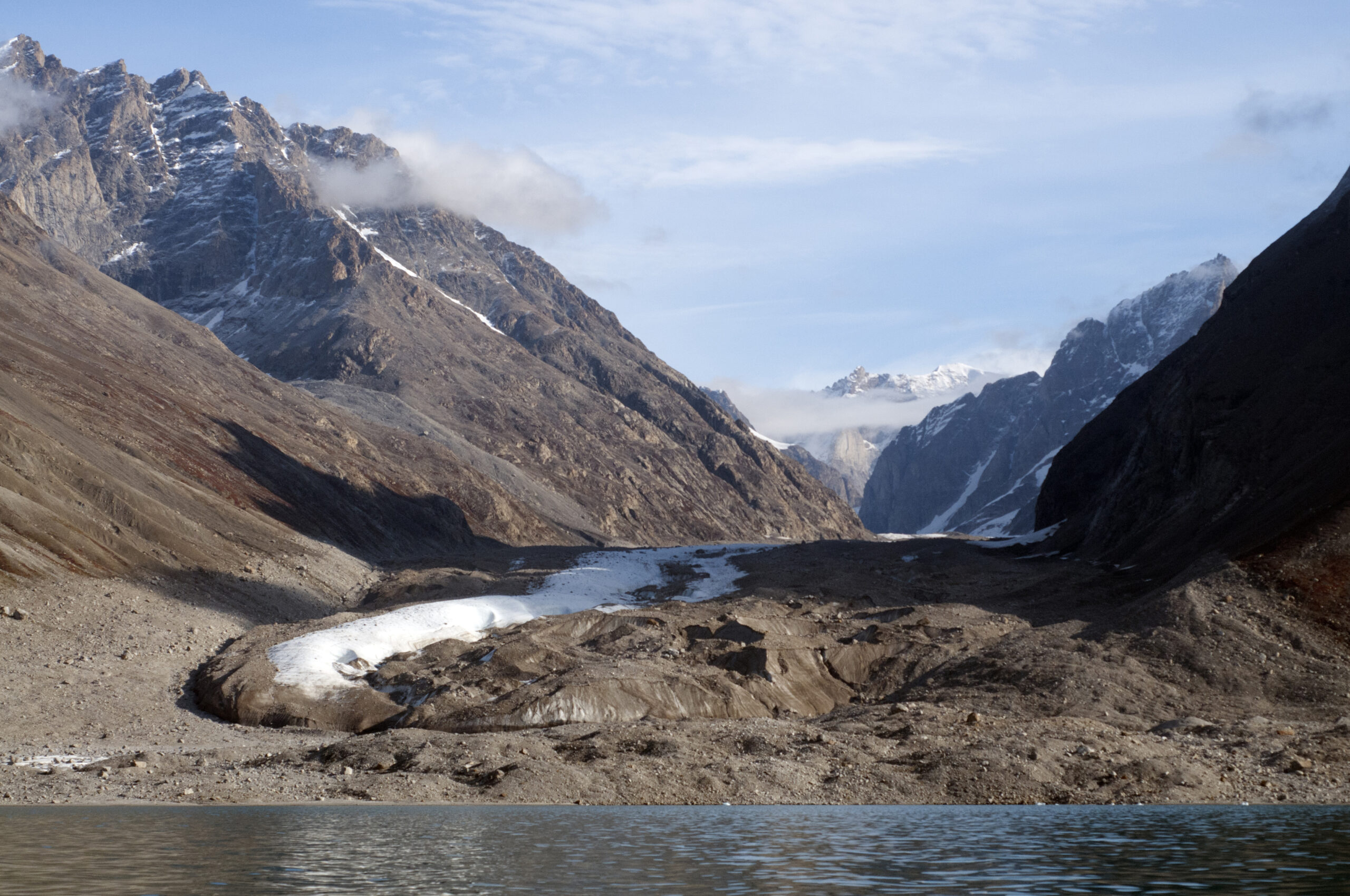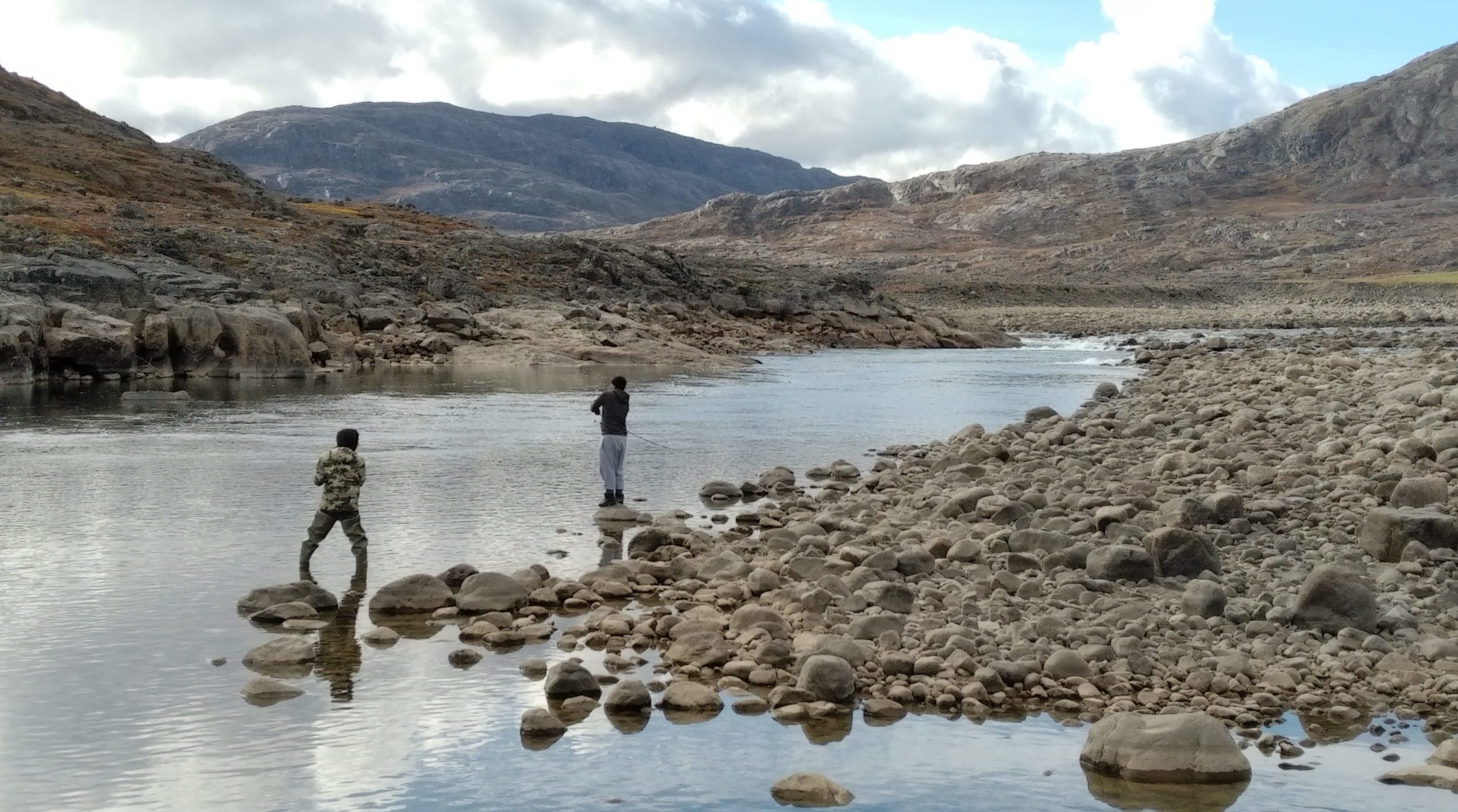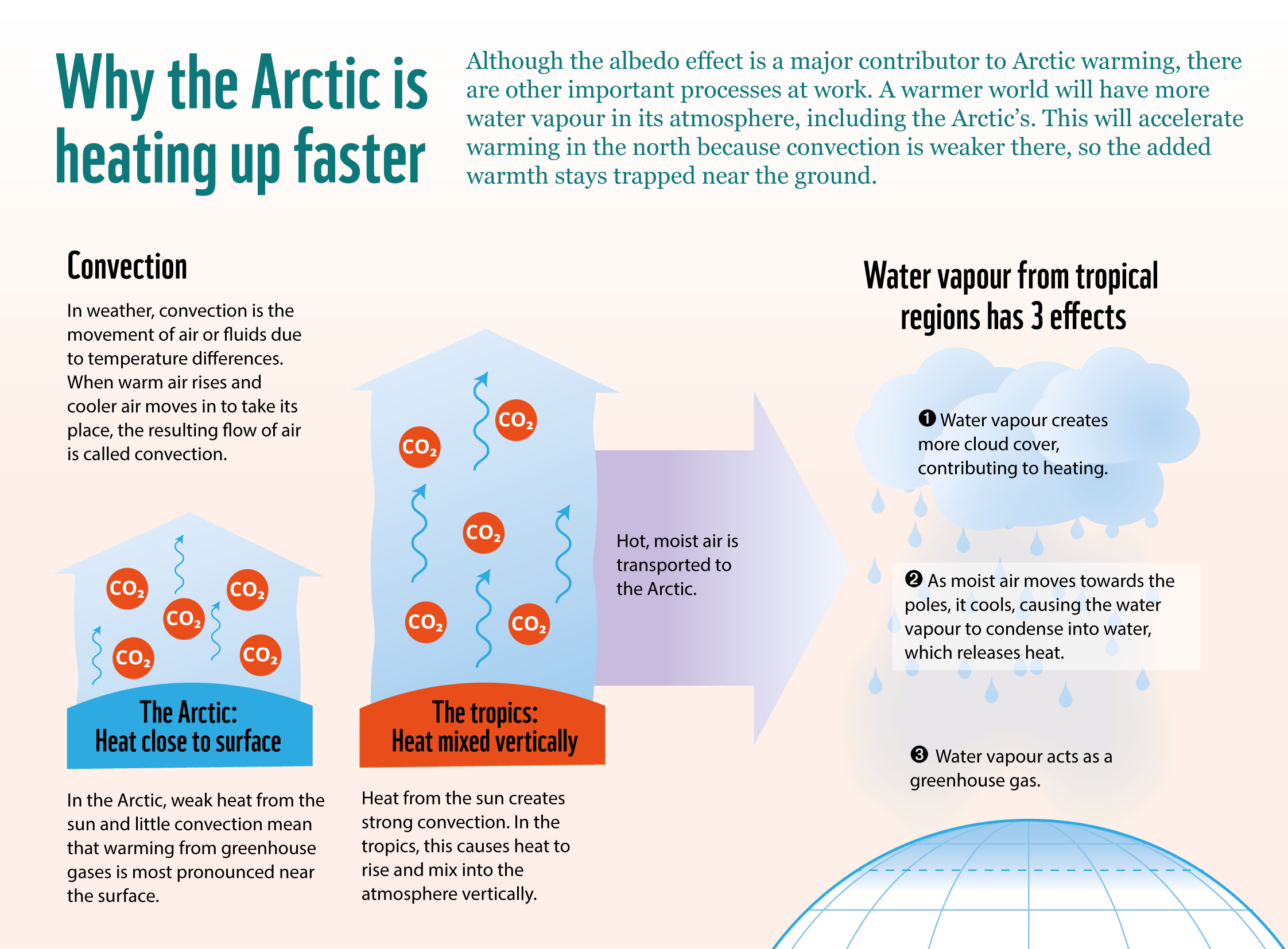Why is the Arctic warming faster than the rest of the planet?
While the world as a whole has warmed by around 1.2°C since the start of the industrial revolution, the Arctic has warmed by around 3°C, with devastating impacts for people and ecosystems. This faster pace of warming is often attributed to the melting of sea ice: as it disappears, it is replaced by a growing expanse of dark ocean water that absorbs sunlight rather than reflecting it.
But as University of Exeter’s postdoctoral research fellow MATTHEW HENRY explains, other important factors that are not as well understood are also at play.

As long ago as 1896(!), Swedish chemist Svante Arrhenius theorized that places in the world that are covered in snow or ice for most of the year would see accelerated warming from increased carbon dioxide in the atmosphere. His hypothesis was that these locations would reflect less sunlight back into space when the snow and ice began to melt.
Scientists now know that the reasons for the Arctic’s amplified warming are more complex than that, but the simplicity of Arrhenius’ explanation has captured the narrative around Arctic warming, especially in the public’s understanding.
In fact, there are two additional, interacting mechanisms that help explain this intensified warming: convection and the presence of water vapour.
Warm air rises
First, convection occurs when air near the Earth’s surface is heated by the warmth of the ground. It becomes lighter than the air above it, and rises.
In tropical regions, the surface is constantly heated by the sun, leading to a lot of convection that mixes in the atmosphere vertically. But in the Arctic, less sunlight reaches the surface. This results in the atmosphere being heated primarily by warm, moist air transported from the tropics — so there is less convection and vertical mixing.
Further, the additional warming caused by carbon dioxide and other greenhouse gases mainly affects the atmosphere near the surface. In the tropics, this extra warmth gets spread vertically due to convection. But in the Arctic, the warming from greenhouse gases is most pronounced near the surface.
Water vapour warms
Secondly, water vapour (water in its gas form) plays a very important role in our climate system. Were it not for the transport of moist air from the tropics to the poles, the temperature difference between these regions would be much higher. In a warmer world, we expect there to be more water vapour in the atmosphere, and as a result, more moisture in the Arctic atmosphere.
This has a threefold impact on Arctic surface temperatures: first, water vapour itself acts as a greenhouse gas, contributing to additional warming. Second, as the moist air moves toward the poles, it cools, causing the water vapour to condense into liquid water, which releases heat into the atmosphere and further warms the region. Third, the increased moisture leads to more cloud cover, which tends to warm the Arctic.
Putting these two influences together, the absence of convection (described above) exacerbates the effects of water vapour on Arctic warming.
There is still some uncertainty as to how fast the Arctic will warm in the future, and there is an ongoing scientific debate about when the first ice-free Arctic summer might occur and what effect it might have on weather in the midlatitudes.
Cutting emissions is still the best bet

Cutting emissions can slow the rate of warming until the Earth’s temperature stabilizes when we reach net zero. But until we are able to remove more carbon dioxide from the atmosphere than we put in, the temperature will not go down. For this reason, there is increasing interest in so-called solar climate interventions — such as marine cloud brightening and stratospheric aerosol injection — that aim to cool the climate intentionally by increasing the amount of sunlight reflected to space.
Any intervention that cools the planet globally will cool the Arctic more because of the albedo effect, convection, and water vapour mechanisms described above. However, there are still deep uncertainties about the possible effects and impacts of these climate interventions. Much more research is needed on these from both the physical and social science perspectives before we can consider applying them.
In other words, despite new ideas and advancing technologies, if we want to slow down the ongoing changes to the Arctic climate and ecosystems, our first priority should be cutting our emissions as rapidly as possible.
Matthew Henry is a post- doctoral research fellow in climate science at the University of Exeter in the UK. His work focuses on solar climate interventions and the Arctic climate. This article was originally published in the latest issue of the WWF Global Arctic Programme magazine, The Circle.


